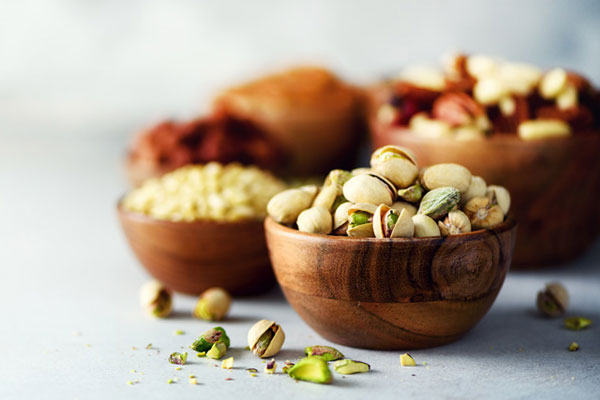When the pistachio trees reach the age of 5 years, they will start producing nuts. They reach full production capacity at around 15 years old, and will keep on producing for about 50 years after that. When the nuts are ripe, the pinkish-ivory furry shells split open lengthwise, signalling that they are ready for harvesting. The nuts inside are a bright, soft green, covered by a thin rose-colored skin. They are harvested, and then hulled, dried and roasted.
If unprocessed, the fresh Pistachio nuts inside are sweet and juicy. They can be used at that stage, fresh, without the processing. They can be puréed into a pesto for savoury dishes, or the purée can be used in desserts such as ice creams or custards.
The shells of dried Pistachio nuts aren’t naturally red; they are dyed red. Most California Pistachios are sold undyed, to distinguish them from foreign imports, but some are sold dyed because many consumers still think they should be red. Connoisseurs prefer Pistachios from Turkey or Iran, saying that the California ones, though bigger, are bland and lack the pungency that Pistachios should have. Iranian Pistachios, though, are very hard to come by in America, even though Iran has 4 times as many Pistachio groves as does California: a tariff of 300% on Iranian Pistachios, imposed in 1986, is still in effect (as of 2004), and it is likely the California Pistachio Commission is in no hurry to see that tariff go down.

